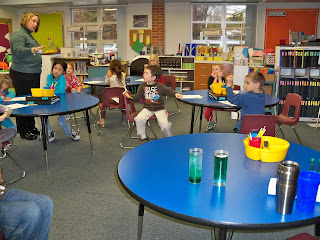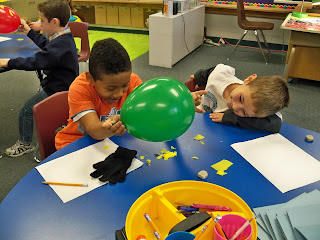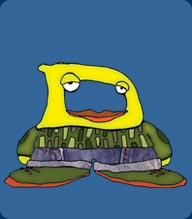This past week, the students finished their snowman cards and wrote the final draft of their winter poems. They made a second copy of their poem for you. I will send them home right before winter break. Today, each student made a micro-podcast of their poem that you will find in the previous post. They did a great job on their poems and their first audio presentation!
While each student recorded their audio files, the other students were continuing their individual work in the TOPS Math program.
At recess today, I introduced the students to the game, Blokus. It is a strategy board game that challenges spatial thinking and it a lot of fun for all ages. If your family likes board games, it is a great one!
In the afternoon, the students were introduced to our newest Quirkle, Hallie Heat. In our experiment, we learned the warmer water (and air) rise, while colder water (and air) sink. Your child has their experiment log to share their hypothesis, observations and results with you.
All of our cards were mailed out last week. We ended up making and mailing 62 cards. Thank you so much for your donations of stamps to assist us with the postage costs. We have received 47 cards so far.
Today, we opened some of the cards we have received from other schools including ones in North Carolina, Texas, Wisconsin and Virginia. We used a map of North America to locate the states and their relative direction and distance from Kansas City.
We discussed the grade levels, number of students in each class and the average high temperature for December 15th in each town/city. A couple of weeks ago, in the computer lab, the students were introduced to Google Earth and the features that allow us to zoom into a map to the point of virtually standing in front of the schools. They were very observant and noted differences and similarities in each town/cities geographical location, proximity to the ocean, lakes or rivers, rural and urban areas, the physical size of the schools and even surrounding plant life. As we were discussing the average high temperatures today, by looking at the map of North America, the students realized the colder temperatures were to the north while the southern locations were warmer.
There is no SAGE class next week, December 21st as it is a half day. I will look forward to seeing them all again on our next SAGE day, January 9th. That is also our first day of Spanish. Each week, Senora Gates will teach a 30 minute Spanish lesson. I know they will be excited to start our Spanish language lessons.
I hope your child and your family enjoy our winter holiday break!
There is no SAGE class next week, December 21st as it is a half day. I will look forward to seeing them all again on our next SAGE day, January 9th. That is also our first day of Spanish. Each week, Senora Gates will teach a 30 minute Spanish lesson. I know they will be excited to start our Spanish language lessons.
I hope your child and your family enjoy our winter holiday break!










































